Animalia
Emerald ash borer
Agrilus planipennis
Maarten de Groot
|
|
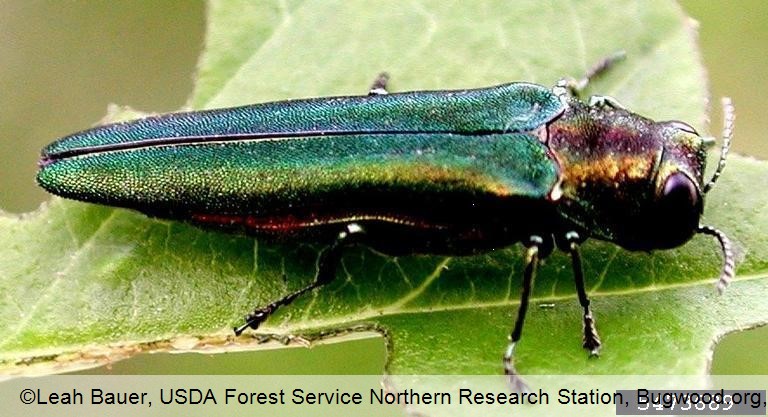
Fig. 1. Adult of Agrilus planipennis
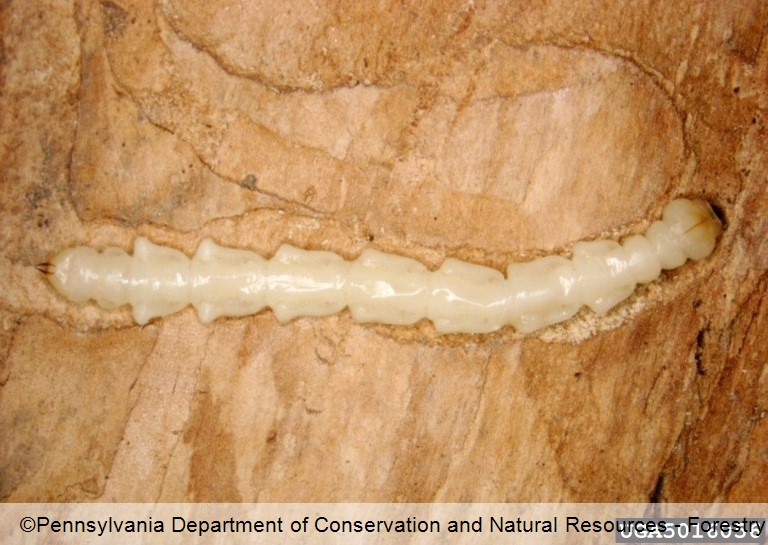
Fig. 2. Larva of Agrilus planipennis
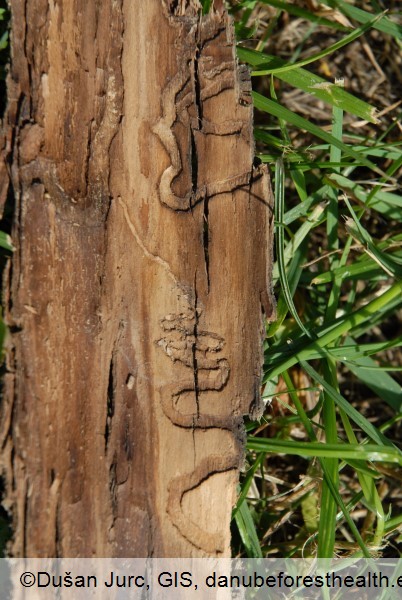
Fig. 3. Galleries on an ash tree caused by Agrilus planipennis
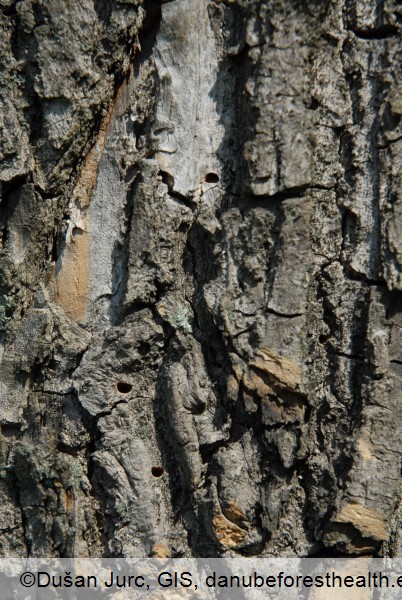
Fig. 4. Exit hole of Agrilus planipennis
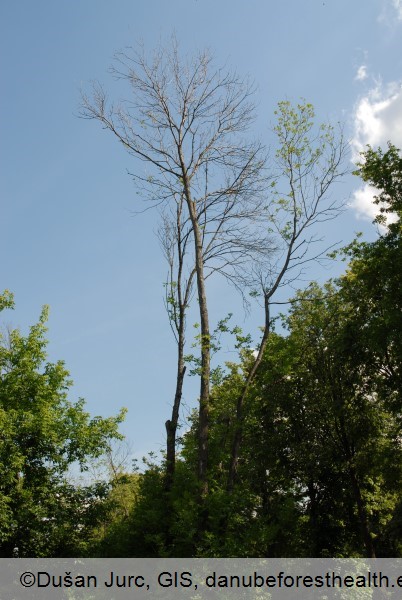
Fig. 5. Canopy of a dying tree due to attack Agrilus planipennis
DETECTION PERIOD:
May-July (flight period), May-October (damage)
DESCRIPTION:
Adult beetles are shimmering emerald green, ranging from 8 to 14 mm. The female deposits 60 to 90 eggs individually or in groups in the cracks of the host tree. The larvae are pale yellow in color and at the end of the development are from 26 to 32 mm long and the last segment bears one pair of brownish serrated styles. The larvae damages the tree by drilling 20 to 30 cm long serpentine galleries in the bark and cambium, which it fills with brownish sawdust and frass. At the beginning of the development of larvae, the galleries are narrow, and becomes wider in later developmental stages. The larvae feed intensively till winter, hibernate in pupal cells, and continue feeding in spring. The pupae are in the wood (if the bark is thin) or in the bark (if the bark is thick). The exit holes are 3 to 4 mm wide and have the characteristic shape of the capital letter D.
HABITAT:
On ash, elm trees and walnut trees in natural habitats, nurseries, plantations and urban areas.
STATUS:
The species does not occurs in the REFOCuS study area.
IMPACT:
Ash is often used for its wood. It is also an ornamental tree in parks, gardens and along roads. It is an important tree in forests. The emerald ash borer can develop in vital trees and causes its dieback. Therefore, the emerald ash borer can have a huge economic and ecological impact.
SIMILAR SPECIES:
The emerald ash borer can be confused with the various species found in ash, causing similar symptoms. In particular, they can be replaced with other scribers due to a similar outlet and similar size. All scribers are typically metallic colored and color does not allow for reliable identification.
We can also confuse them with ash bark beetles (Leperesinus fraxini and Hylesinus oleiperda), which also cause the ash dieback, and weakening of trees due to other harmful factors (mainly due to ash dieback - Hymenoscypus fraxineus or Armillara spp.).
|